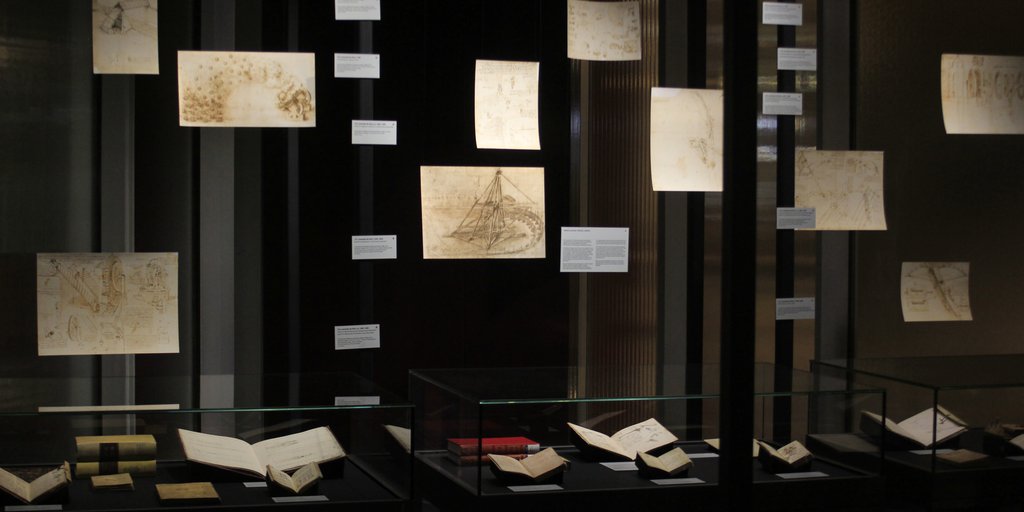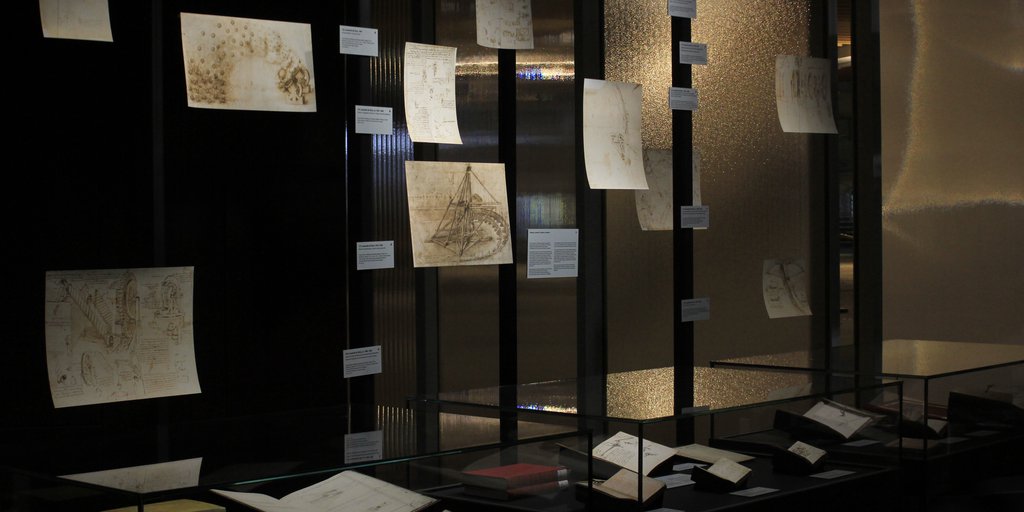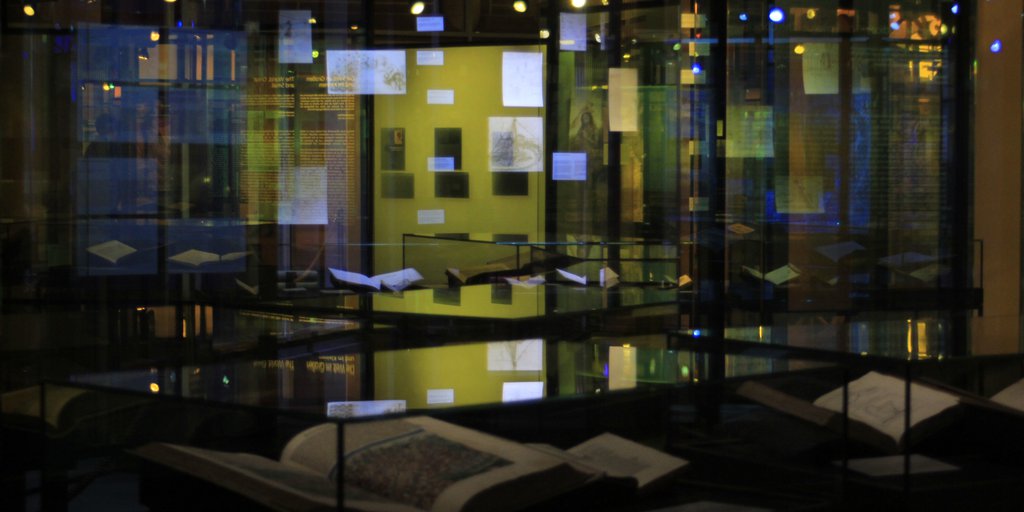
Epilogue: The Codices <
This is a collection without order, compiled from many papers that I have copied here,
hoping to put them in their respective order, according to the subjects they address …
Leonardo da Vinci
Codex Arundel, fol. 1r. Translation: Elizabeth Hughes
Leonardo’s surviving literary estate comprises over 4,000 sheets; a total of 22 volumes of illustrated manuscripts, generally known as codices, still exists today. The material is extremely heterogenous. Alongside pocket-sized sketchbooks with jottings made on the spot purely for his own use, there are large-format clean copies that seem to address an audience. What the volumes have in common is their thematic diversity, and all show traces of continual use and revision. At his death, Leonardo left the volumes to his collaborator and heir Francesco Melzi (1491/92–1567). Melzi’s heirs sold a large part of this legacy to the sculptor Pompeo Leoni (ca. 1533–1608). In 1637 the collector Galeazzo Arconati (before 1592–1649) donated several of these manuscripts to the Biblioteca Ambrosiana in Milan. They ultimately reached Paris as part of Napoleon’s spoils of war where most of them are still kept today—fortunately mostly in their original binding. Other codices took entirely different paths—though under similarly dramatic circumstances.
Codices <
 | 112.
Rules of grammar ca. 1497 |

Leonardo was over 40 years old when he began teaching himself Latin. This double page shows his method, which is not very different from today’s method of memorizing grammatical rules. Written in his typical mirror writing, it is disciplined and clear, working through the declination of nouns case by case (identifiable by the abbreviations from nominative to ablative). Different forms of verbs, for example, are classified according to the classes of verbs based on the system of Niccolò Perotti’s Rudimenta grammatices (42 ■). Memory aids are provided by sample sentences like “Pirus amat Penalopem” (Pirus loves Penelope) and “Ego doceo te artem gramaticam” (I teach you the art of grammar).
References
Bambach, Carmen C. 2019. Leonardo da Vinci Rediscovered. Vol. 2: The Maturing of a Genius 1485–1506. 4 vols. New Haven / London: Yale University Press, 81–84.
Findlen, Paula. 2019. “Learning Latin.” In Leonardo’s Library. The World of a Renaissance Reader, edited by Paula Findlen. Stanford, CA: Stanford Libraries, 146–149.











